Food
Kosher Pet Food
This is not a religious concern that had previously appeared on my radar.Read the whole article here.
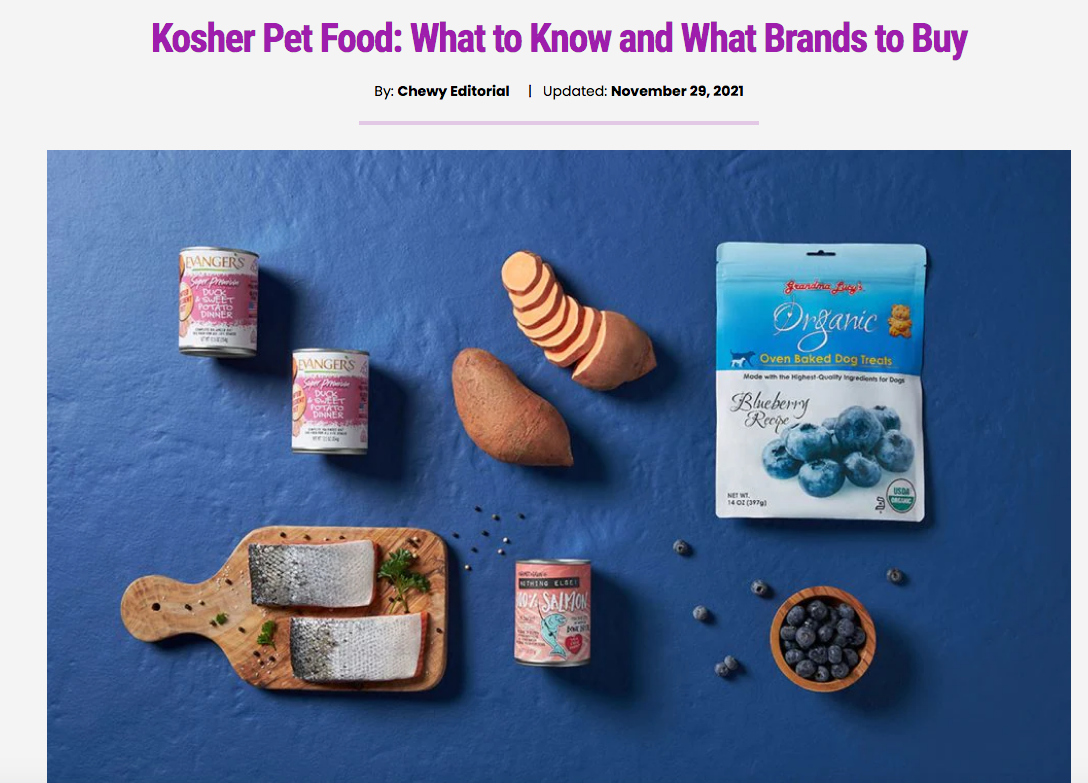
Posted By: Paul - Sun Jul 24, 2022 -
Comments (3)
Category: Food, Pets, Religion
Velveeta Nail Polish
A new shade of nail polish from Nails.INC which promises that "the cheese scent will appear when fully dry."That doesn't sound like a good thing.
And of course, there's the obligatory warning: "While our polish is cheese-scented, it is (unfortunately) not made of VELVEETA. Please don’t eat it."
More info: nailsinc.com

Posted By: Alex - Sun Jul 03, 2022 -
Comments (2)
Category: Fashion, Food
The Good Book Cookbook
Not a lot of nouvelle or fusion or fast-food cuisine in this volume. (Read it here.)I did a search for "locusts" within the book, but no recipes, with honey or otherwise. However, you can source them here, at Biblical Protein.
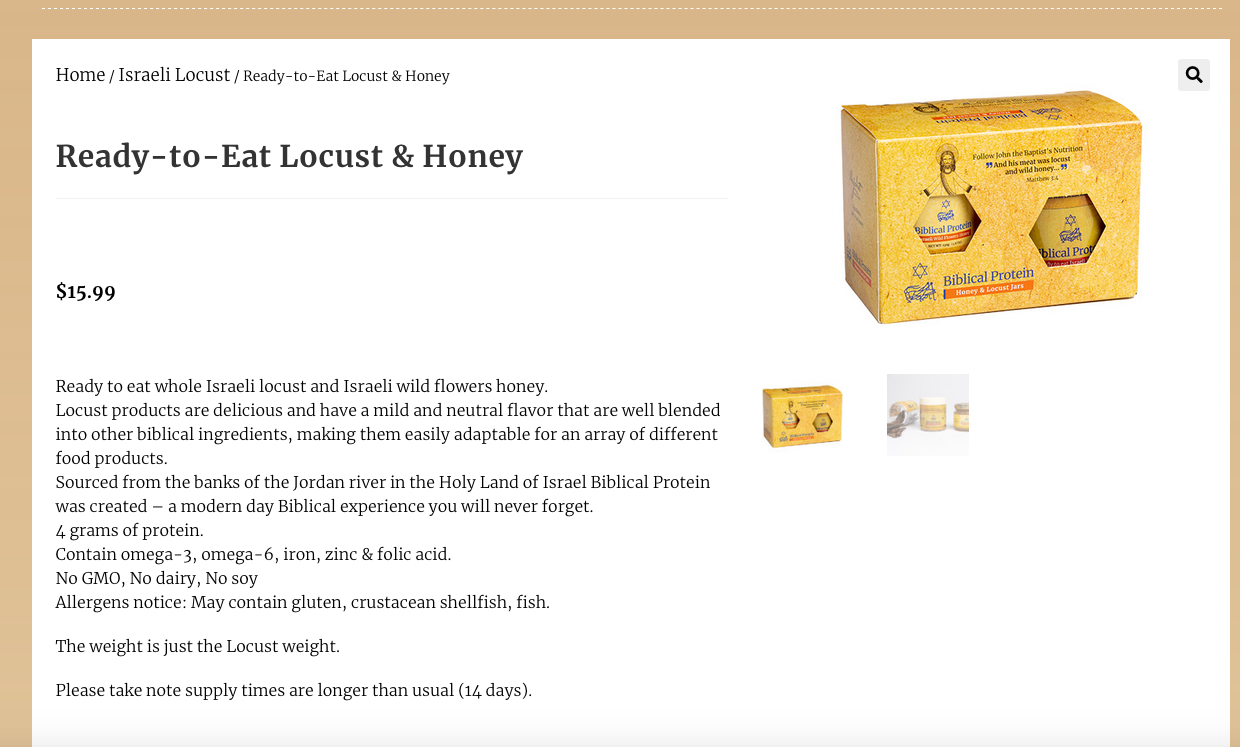


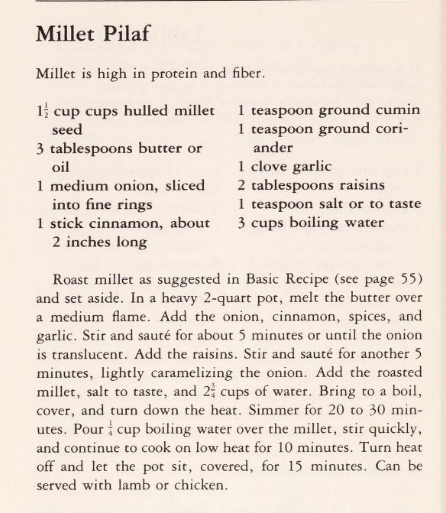
Posted By: Paul - Wed Jun 22, 2022 -
Comments (0)
Category: Food, Nutrition, Cookbooks, Religion, 1980s
The Gourmet Game
Here's a predecessor for all those competitive cooking shows and restaurant makeover shows.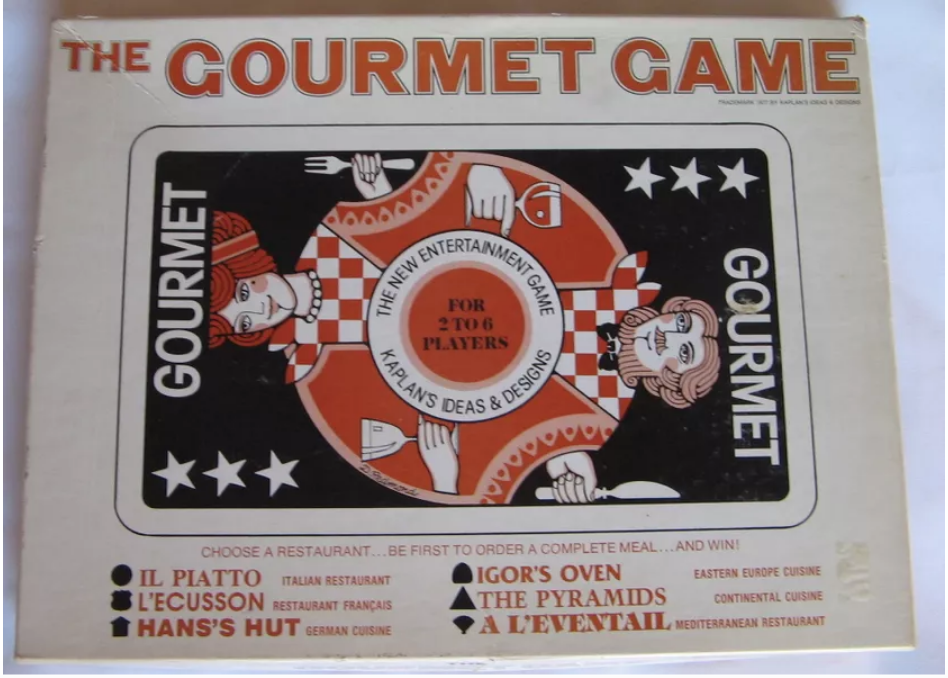
Each player has his own board, which is in the form of a menu. Dishes include classic haute cuisine and are name in English and French (you'll soon learn the French words and their correct pronunciation). Six cards are dealt to each player, and as a player takes new cards from the deck or does discarded by his opponents he gradually puts together a gourmet meal. To win, however, he must order the right dishes and beverages, and must prevent other players from ordering.
Learn more here.
Posted By: Paul - Mon Jun 20, 2022 -
Comments (1)
Category: Food, Games, Stereotypes and Cliches, 1970s
French Fries Guitar
Made out of McDonald's fries. By Russian guitar maker Artem Mayer.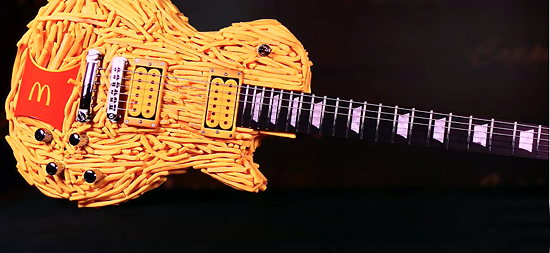
Posted By: Alex - Sun Jun 19, 2022 -
Comments (0)
Category: Food, Music
Mrs. Sparrow found a sparrow
1952: Mrs. Florence Sparrow found a sparrow in her loaf of bread.
Spokane Chronicle - Feb 29, 1952
Posted By: Alex - Fri Jun 17, 2022 -
Comments (4)
Category: Food, Odd Names, 1950s
Burglary Party
Our Glorious Founder Chuck Shepherd frequently featured reports of housebreakers who a) did housework; b) drank themselves into a stupor; c) cooked a meal; d) had a bath or shower; etc. Here's a variation on the theme.Source: Wichita Falls Times (Wichita Falls, Texas) 30 Jun 1953, Tue Page 1
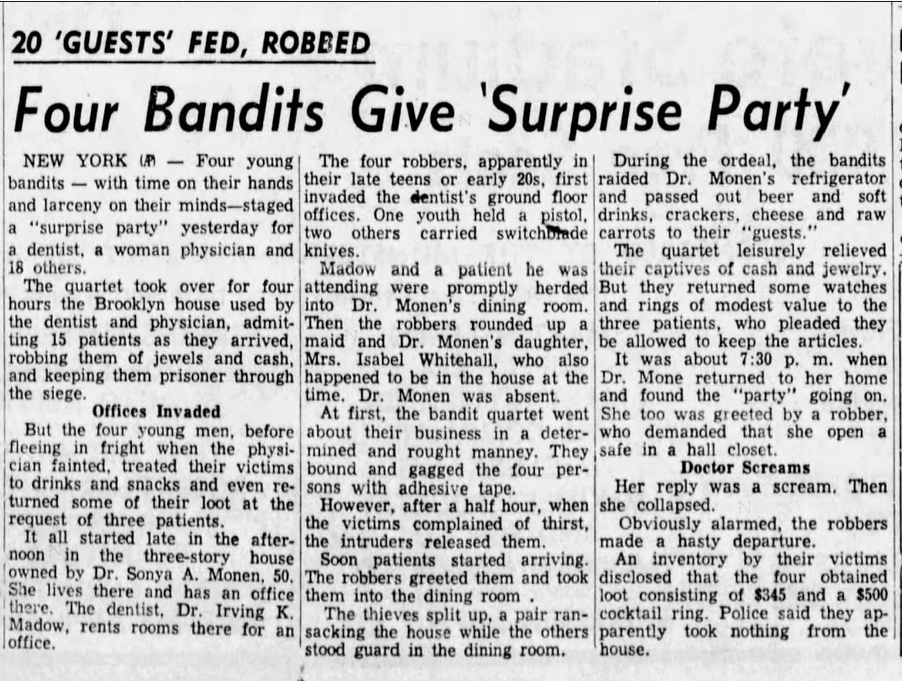
Posted By: Paul - Tue May 31, 2022 -
Comments (2)
Category: Dinners, Banquets, Parties, Tributes, Roasts and Other Celebrations, Food, Stupid Criminals, 1950s
Edible Tape
A group of students at Johns Hopkins recently invented edible tape for burritos. They're calling their invention Tastee Tape.
I thought edible tape was a pretty old idea, and some searching quickly pulled up prior examples of it. But despite the idea being around for a while, I've never seen edible tape in a supermarket. So perhaps the Johns Hopkins version of it will be the one to catch on.

San Luis Obispo Tribune - Apr 13, 1991

Honolulu Star Bulletin - Sep 2, 1950
Posted By: Alex - Mon May 16, 2022 -
Comments (2)
Category: Food, Inventions
The Kitchen of the Unwanted Animal
According to its website, The Kitchen of the Unwanted Animal is "the kitchen that sells products from unwanted animal species. This installation makes a statement about the absurdity of meat production and socially unacceptable animals."The website is in Dutch, so that quotation is via Google Translate.
The Kitchen is located in Amsterdam and, from what I can gather, it's primarily a food truck. Though it does cater some sit-down events.
The "unwanted species" on its menu include pigeon, goose, muskrat, crow, and horse.
More info: npr.org


Posted By: Alex - Tue May 03, 2022 -
Comments (10)
Category: Food
House Bean Soup
The U.S Congress has some unusual traditions, one of which is that the U.S. House of Representatives Restaurant always has bean soup on the menu. Details from the Congressional Archives:
Back page of the 1955 House Restaurant Menu
Posted By: Alex - Mon May 02, 2022 -
Comments (2)
Category: Food, Politics

| Who We Are |
|---|
| Alex Boese Alex is the creator and curator of the Museum of Hoaxes. He's also the author of various weird, non-fiction, science-themed books such as Elephants on Acid and Psychedelic Apes. Paul Di Filippo Paul has been paid to put weird ideas into fictional form for over thirty years, in his career as a noted science fiction writer. He has recently begun blogging on many curious topics with three fellow writers at The Inferior 4+1. Contact Us |




